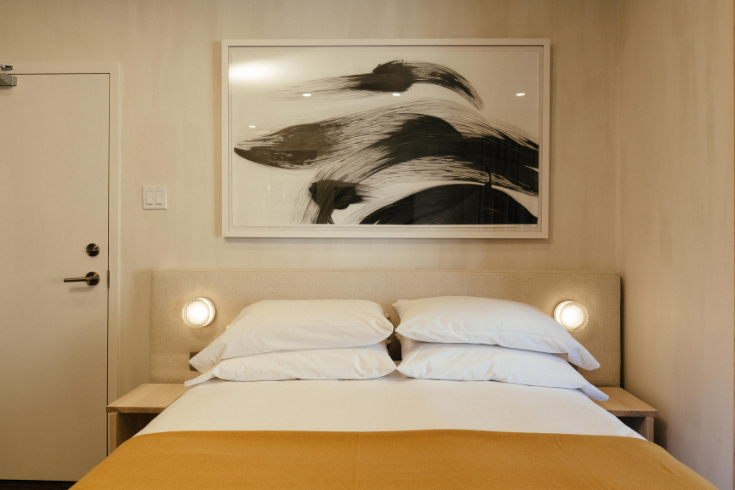What Is a Den? Distinguishing Features of This Bonus Space


Photo: istockphoto.com
Q: I’m looking to buy a home, and I have noticed several real estate listings that mention a den. Exactly what is a den, and how will I be able to use it once I move in?
A: Since dens aren’t standard in most homes, it’s not unusual to ask “What is a den in a house?” It can be admittedly tough to determine a den vs. living room or a den vs. family room.
A den is defined as an often secluded room that’s used as a quiet, comfortable, and informal place for intimate conversation, reading, or working. As a quiet space, the term’s origin makes sense as dens in nature provide tucked-away places for animals to shelter or hibernate.
Keep reading to discover more about what a den is, how it can be used, how it compares to other rooms in a home, and the many benefits it provides like versatility, flexibility, value, and creativity.
RELATED: The 14 Best Sofa Brands
A den is a multipurpose room separate from other living spaces.
Finding a property with a den can be attractive for some families since this versatile room provides additional space and privacy in a home. In many ways, a den is a bonus room that can serve multiple purposes depending on a homeowner’s needs. It can be used for activities like reading, working, studying, playing music, creating art, gaming, and more.
Dens are typically on the smaller side compared to other rooms in the house and may or may not have windows, a closet, and two ways to exit. The main characteristic that sets a den apart from a family room or living room is that a den has its own door so that it’s a quiet place away from other activities in the home.

Photo: istockphoto.com
A den’s decor is usually different from the living room decor.
Dens also differ from living rooms based on the way they are decorated and how they are traditionally used. Living rooms tend to be more formal areas meant for entertaining guests. They usually have more elegant furniture that serve as eye-catching showpieces as guests enter the home.
On the other hand, dens offer a comfortable and relaxed atmosphere where people can put their feet up and engage in a hobby like listening to music, watching a movie, or knitting. Dens might have a sofa bed and be centered around media like a big screen television, speakers, and a video game console.
The size and location of a den within a home can vary.
One of the reasons a den is considered such a flexible room is that there are no hard rules as far as where they are located and how big they should be. (Some classic architectural styles have placement and size guidelines for living rooms and family rooms.) In fact, there is no official term or classification for a den in real estate or building codes, so it is often left up to the homeowner to create the space they desire.
That means a den can be located on any floor of the home. On the main floor, a den might be to the left or right of the main entrance behind a closed door. Upstairs, a den might be converted from an extra bedroom. Formal living rooms are typically at the front of the house to welcome guests, while a den is often more hidden, like towards the back or on the side of the house. However, a room in a basement is typically not referred to as a den.
The purpose of a den depends on the household.

Photo: istockphot.com
Many wonder what is a den used for exactly? This is the best part of having a den: it can be almost anything a homeowner dreams. It could be an art studio, library, music room, study or home office, exercise room, meditation retreat, game room, home theater, playroom, or even a podcast recording studio. Dens are often used as a gathering place for family members to enjoy recreational time together, but they could also be a designated area for a particular family member, such as a home office for mom or playroom for the kids.
The purpose is defined by how you decorate it. There are many tricks to get the most out of living space to open it up and make it feel as cozy and functional as possible. For example, a den could serve as both an art studio and game room by strategically choosing furniture (e.g., art table on one side of the room plus a card table on the other) and including storage for each hobby to keep the room tidy. For a smaller home with a growing family, a den could be used as a nursery or guest room for visiting friends and relatives.
A den isn’t a bedroom, but it can be converted into one.
Another question often asked is can a den be used as a bedroom? First, it’s important to understand what makes a room a bedroom. While safety code requirements vary by state, technically, a bedroom needs to have two ways to get in and out of the room that are operable from the inside without needing a key or special tool. This is typically a door to a hallway plus a window or a door that opens to the outside. In addition, there are local building requirements for a bedroom regarding square footage, window size, and ventilation. According to real estate experts, a room is considered a bedroom if it has a door that can be closed, a window, and a closet.
Given these guidelines, it can then be determined if a current den can also serve as a bedroom. Oftentimes, a den does not have a closet. However, a den can certainly be converted into a bedroom to meet the needs of a growing family or to boost the resale value of a home. The project might entail adding a closet, creating a window, installing better ventilation, and mounting a smoke detector.
RELATED: How to Decorate a Living Room
The bonus space of a den may be beneficial at resale, but converting a den into an extra bedroom can be even more valuable.
When people are shopping for a new home, they primarily focus on the number of bedrooms. In fact, the value of a home increases with each additional bedroom. Opendoor data on home improvement projects shows that converting living space—such as a den—into a bedroom can boost a home’s median value by at least 6 percent. This value is even higher in dense metro areas where properties with multiple bedrooms are harder for buyers to find.
However, adding more living space like a den also helps increase the price of a home by about 5 percent. While a den might not be as valuable as another bedroom to a home buyer, the extra living space is still an attractive feature and a worthwhile investment. Offering this bonus room provides flexibility to the residents; the home is better able to grow with a family over the years as their lifestyle and needs change.

:format(webp)/https://www.thestar.com/content/dam/thestar/life/2023/03/11/cool-lamps-are-one-of-2023s-biggest-decor-trends/ikea_cool_lamps.jpg)


